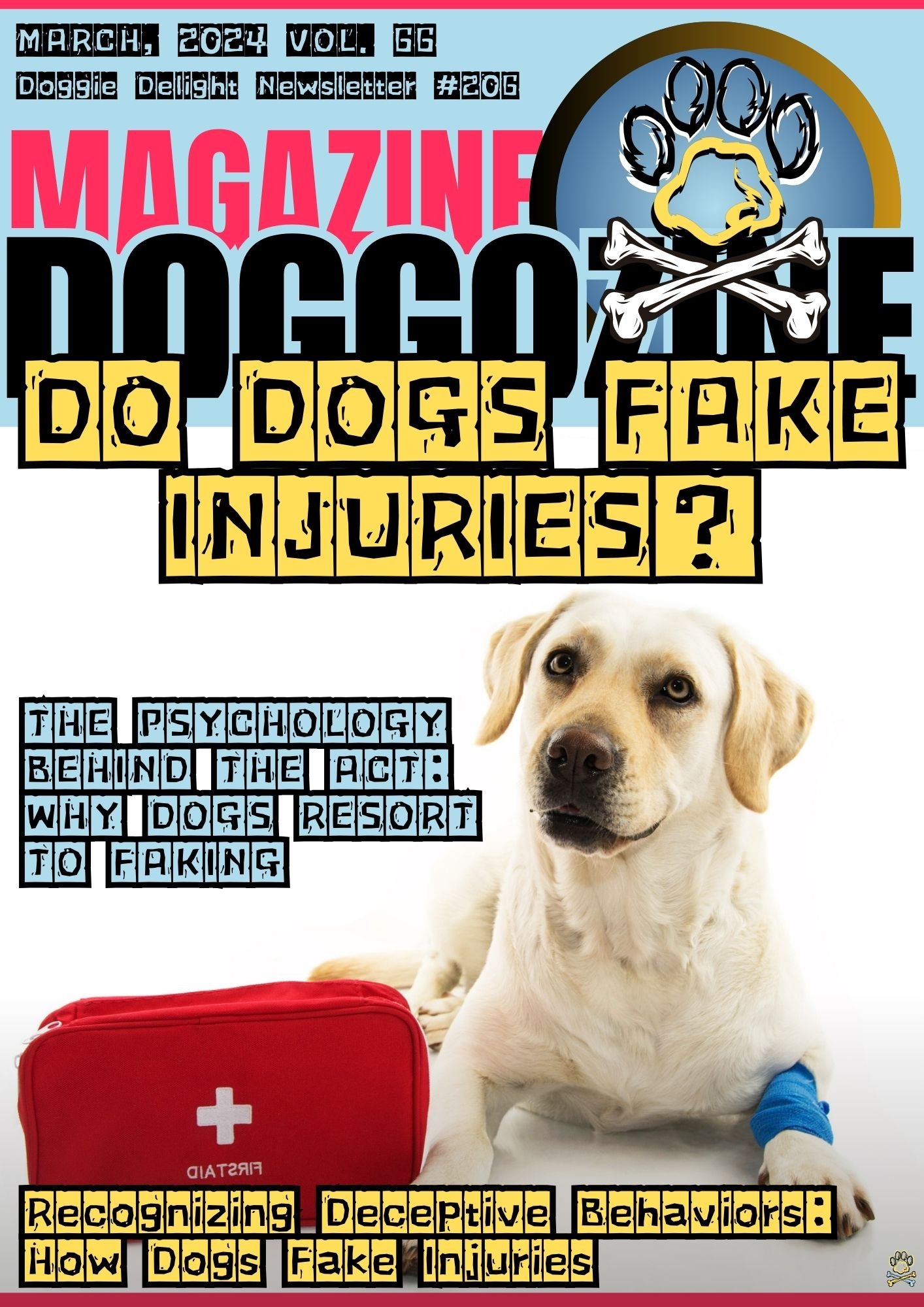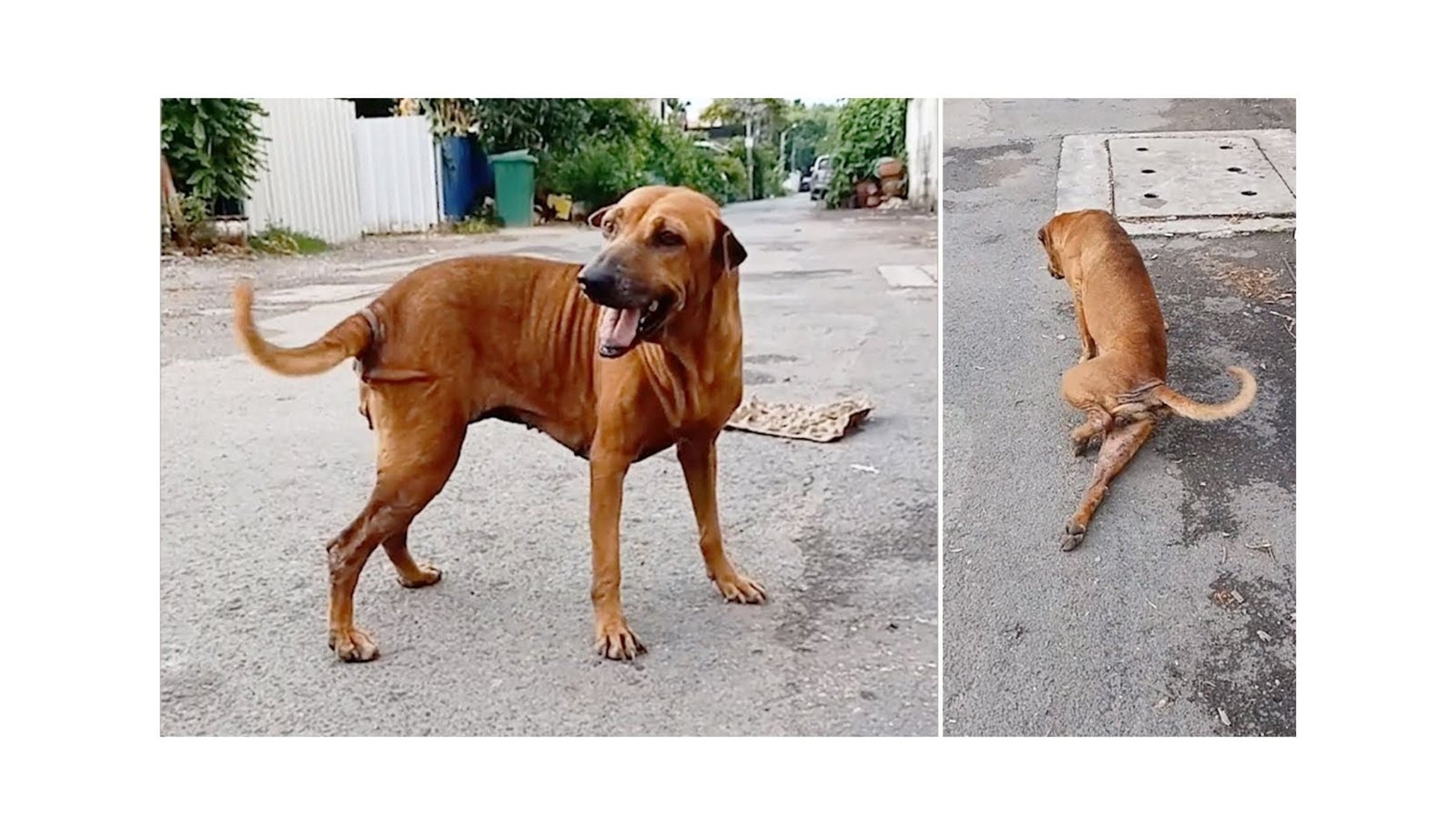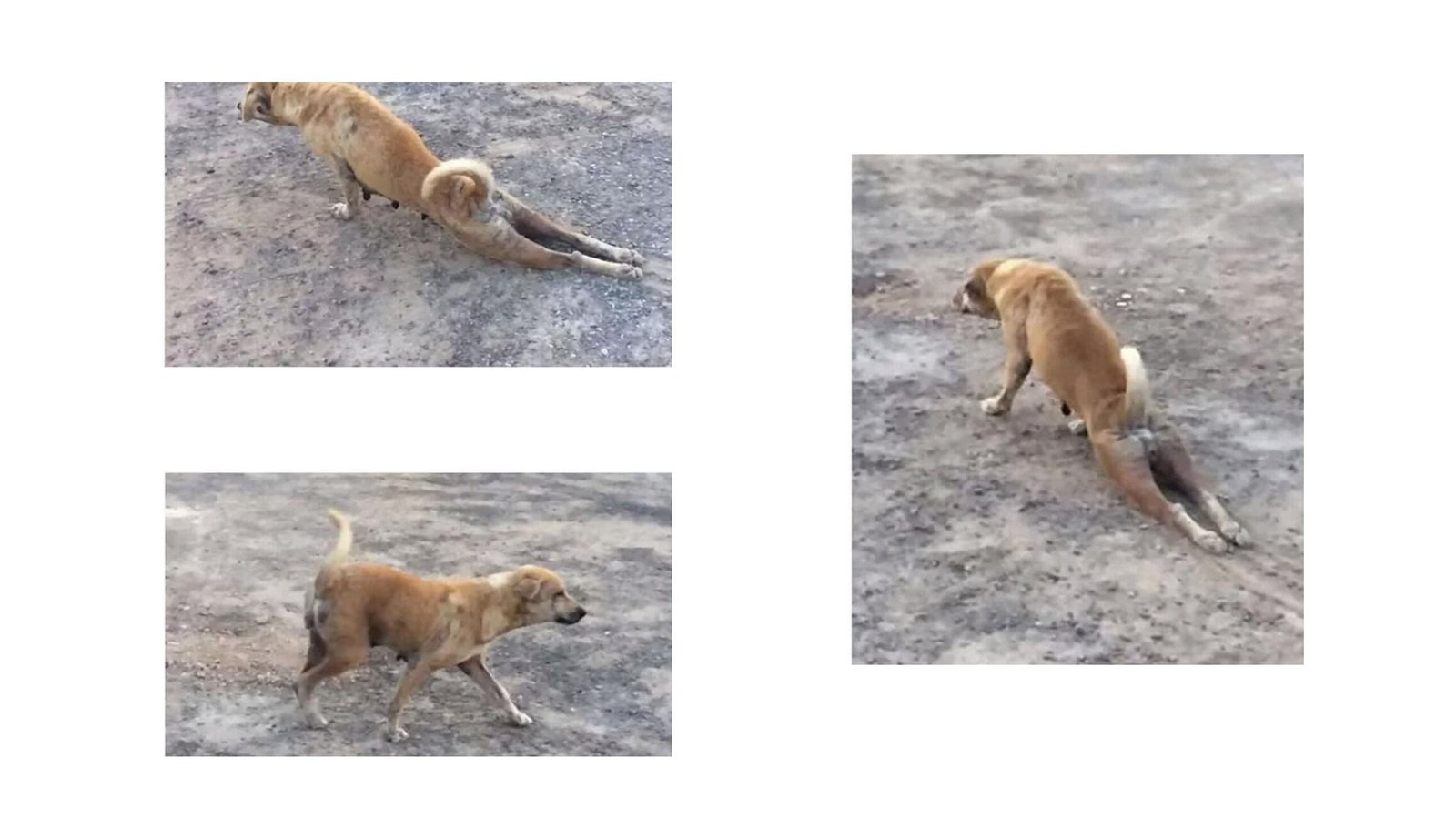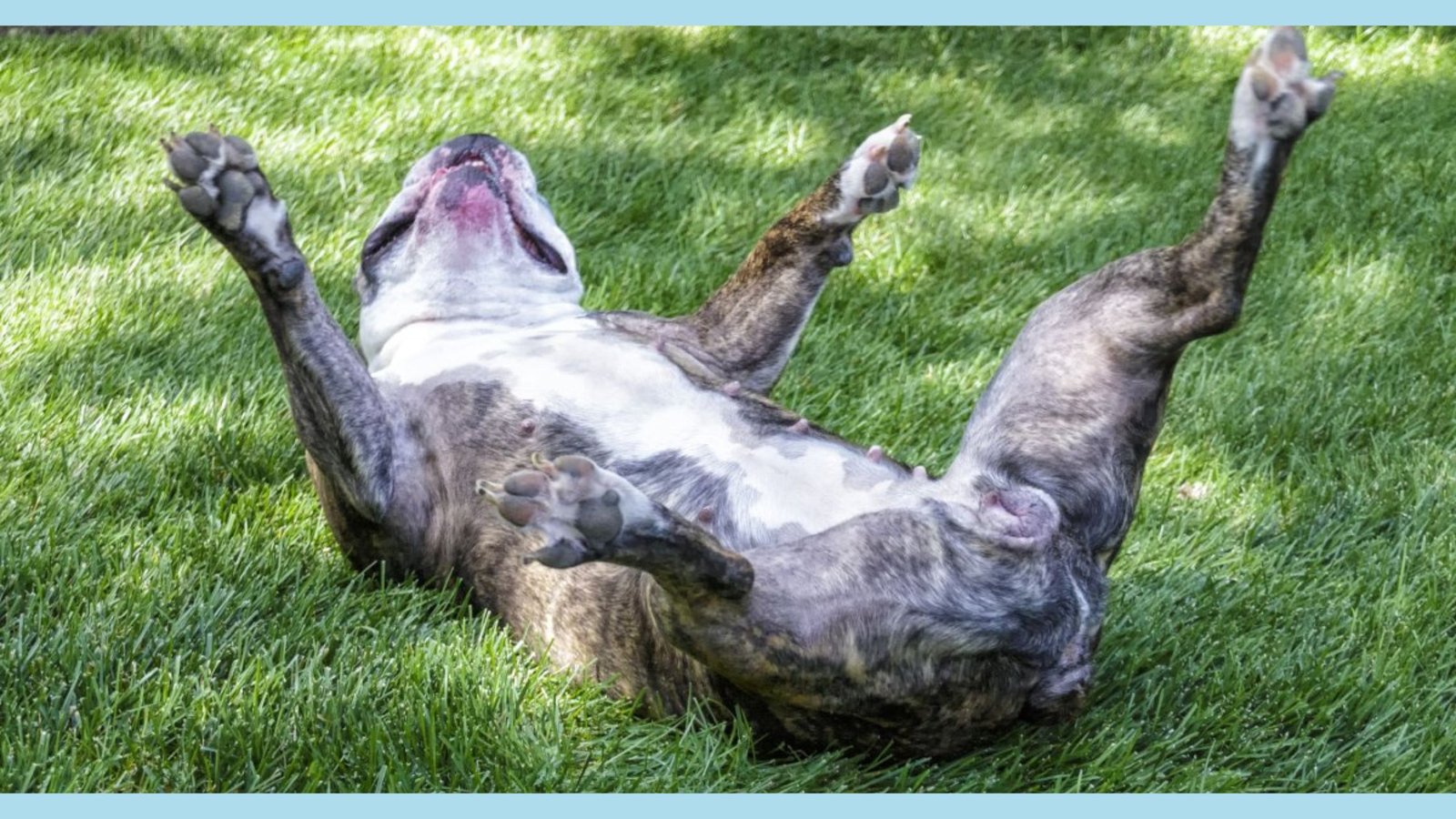
UNVEILING CANINE DECEPTION: HOW DOGS FAKE INJURIES?
Are you ready to uncover the fascinating world of canine deception and the clever ways in which dogs fake injuries? Imagine being able to decode your furry friend’s behaviors and outsmart their tricks with ease. In this comprehensive guide, we will delve into the intriguing realm of dog behavior, shedding light on how our beloved companions master the art of deception.
learn how to navigate dog’s tricks
From understanding the psychology behind their actions to deciphering the subtle signs of fake injuries, we will equip you with the knowledge and tools to navigate your dog’s behaviors effectively. Whether your dog is seeking attention, extra treats, or simply avoiding undesirable situations, we’ll explore it all.
Join us on this journey to develop a deeper bond with your furry friend, foster trust-based relationships, and celebrate the cleverness of our canine companions while encouraging honesty. Get ready to embark on a captivating exploration of canine deception and learn how to navigate this intricate world with confidence and understanding.
Introduction to Dogs Faking Injuries
Welcome to the intriguing world of dog behavior, where our furry friends can sometimes exhibit deceptive behavior that leaves us scratching our heads. In this blog, we’ll delve into the fascinating phenomenon of canine deception, specifically focusing on dogs faking injuries. From the clever acts they put on to the psychology behind their actions, we’ll unravel the mysteries of this peculiar behavior.
🔑 Key Points: Dogs are capable of faking injuries, showcasing their intelligence and ability to manipulate their owners.
Recognizing Deceptive Behaviors: How Dogs Fake Injuries
Have you ever witnessed your dog limping or favoring a paw, only to see them miraculously recover when a treat is offered? This is just one example of how dogs can fake an injury. They may yelp in pain, hold up a leg, or display other signs of discomfort to garner sympathy and attention from their owners.
Some common signs that your dog might be faking an injury include:
- Inconsistent Limping: If your dog limps on one leg but then switches to another or stops limping altogether when they think you’re not looking, it could be a telltale sign of a fake injury.
- Sudden Onset: Genuine injuries often have a gradual onset, while fake injuries may appear suddenly and without any apparent cause.
- Attention-Seeking: Behavior If your dog’s “injury” seems to coincide with a desire for attention or treats, it might be a clever act rather than a real issue.
🔑 Key Points: Dogs can exhibit various signs of fake injuries, such as inconsistent limping, sudden onset, and attention-seeking behavior.

THE PSYCHOLOGY BEHIND THE ACT: WHY DOGS RESORT TO FAKING
So, why do dogs resort to faking injuries? The answer lies in their keen understanding of human behavior and their desire for positive outcomes. When a dog receives extra treats, cuddles, or attention after displaying signs of an injury, they quickly learn that this behavior can be beneficial.
Take a look into this real situation
For example, imagine a clever canine named Max, who accidentally stumbles and yelps while playing. His concerned owner rushes to his side, showering him with affection and treats.
Max, being the smart pup he is, realizes that this behavior yields positive results and begins to employ it whenever he craves attention.
Dogs are masters at reading our body language and emotions, and they use this skill to their advantage. By faking an injury, they tap into our nurturing instincts, making us more likely to prioritize their needs and desires.
🔑 Key Points: Dogs fake injuries as a way to gain attention, treats, and other positive outcomes, leveraging their understanding of human behavior.
Learning the Ruse: How Dogs Develop These Behaviors
Dogs are keen observers of their surroundings, constantly learning from their experiences and the consequences of their actions. When a dog receives a positive outcome after displaying a particular behavior, they are more likely to repeat that behavior in the future.
Let’s take the example of a little pup named Luna. One day, while out for a walk, Luna starts limping and whining. Her concerned owner immediately stops, checks on her, and offers comfort. The subsequent message Luna receives is that limping equals extra attention and care.
Over time, through repeated instances of faking injuries and receiving positive reinforcement, dogs learn that this behavior is an effective way to get what they want. It becomes a learned behavior that they can employ whenever they desire a specific outcome.
🔑 Key Points: Dogs develop the behavior of faking injuries through observation and positive reinforcement, learning that it can lead to desirable outcomes.
Deciphering Truth from Deceit: Signs Your Dog Might Be Faking
As a caring dog owner, it’s crucial to distinguish between genuine injuries and clever acts of deception.
Here are some signs that can help you determine if your furry friend is faking it:
- Inconsistent Symptoms: If your dog exhibits signs of discomfort only in certain situations or around specific people, it might be a red flag. Genuine injuries typically persist regardless of the context.
- Sudden Recovery: If your dog seems to “recover” from their injury as soon as they get what they want, whether it’s a treat or attention, it could indicate that the injury was not real.
- Lack of Physical Evidence: If you can’t find any physical evidence of an injury, such as swelling, wounds, or limping that is consistent with a specific ailment, it might be a case of deception.
If you’re unsure whether your dog’s injury is genuine, it’s always best to consult with a veterinarian for a thorough examination.
🔑 Key Points: Inconsistent symptoms, sudden recovery, and lack of physical evidence are signs that your dog might be faking an injury.

STEPS TO DISCERN GENUINE FROM FAKE INJURIES
To determine if your dog’s injury is real or a clever act, take a closer look at their behavior and history. Consider any previous experiences where they might have learned that faking an injury leads to positive outcomes. Establish a strict rule of not rewarding suspicious behavior to discourage future attempts. This fascinating exploration into your dog’s actions will help you become a more discerning owner.
🔑 Key Points: Observe your dog’s behavior, consider their history, and avoid rewarding suspicious actions to differentiate genuine injuries from fake ones.
Addressing Faked Injuries: Effective Strategies for Dog Owners
If you suspect your dog is faking an injury, it’s essential to address the behavior to prevent it from becoming a habit.
It’s advised to do the following:
- Ignore the Behavior: When your dog fakes an injury, avoid giving them the attention they crave. By not reinforcing the behavior, you can discourage them from repeating it in the future.
- Provide Mental Stimulation: Boredom can sometimes trigger attention-seeking behaviors. Ensure your dog receives plenty of mental stimulation through interactive toys, puzzles, and engaging playtime.
- Reward Genuine Behavior: Make a point to praise and reward your dog when they exhibit genuine, healthy behaviors. This will help them understand that they don’t need to resort to deception to gain your affection.
🔑 Key Points: Ignoring fake injuries, providing mental stimulation, and rewarding genuine behavior are effective strategies for addressing canine deception.
When It’s Real: Identifying and Reacting to Genuine Injuries in dogs not fake
While it’s important to be aware of fake injuries, it’s equally crucial to pay close attention to your dog’s genuine health concerns. If you notice consistent signs of discomfort, changes in appetite or behavior, or visible wounds, it’s time to take action.
Trust your instincts and previous experiences to differentiate between real injuries and deceptive acts. When in doubt, always prioritize your dog’s well-being and consult with a veterinarian.
🔑 Key Points: Pay close attention to consistent signs of discomfort, changes in behavior, and visible wounds to identify genuine injuries and seek appropriate veterinary care.

THE CANINE-HUMAN BOND: UNDERSTANDING AND MANAGING MANIPULATIVE BEHAVIORS WHEN DOGS FAKE INJURIES
As dog owners, it’s essential to recognize that our furry friends are not only loyal companions but also keen observers of human behavior. They learn from our reactions and adapt their actions accordingly. While their clever acts of deception might seem amusing or even endearing at times, it’s crucial to maintain a balanced and healthy relationship.
Understand your dog’s motive and maintain clear boundaries
By understanding the motivations behind your dog’s manipulative behaviors, you can take steps to discourage them and foster a bond based on trust and genuine communication.
Consistency, positive reinforcement, and clear boundaries are key to managing these behaviors and ensuring a harmonious relationship with your furry friend.
🔑 Key Points: Understanding your dog’s manipulative behaviors and maintaining consistent boundaries are essential for a healthy canine-human bond.
Beyond the Deception: Fostering a Relationship Based on Trust
While it’s important to address and manage deceptive behaviors, it’s equally crucial to focus on building a strong, trusting relationship with your dog. Consistently reward your dog for good behavior, provide them with a stable and loving environment, and spend quality time together. By fostering a bond based on trust and positive reinforcement, you can help your furry friend understand that they don’t need to resort to deception to gain your love and attention.
🔑 Key Points: Building a strong, trusting relationship with your dog through positive reinforcement and quality time can help discourage deceptive behaviors.
A Deep Dive into Social Media’s Role in Popularizing These Behaviors where dogs fake injuries
In today’s digital age, social media has become a platform where dog owners share hilarious videos and viral clips of their pets’ antics. While these videos might be entertaining, they can also inadvertently popularize and reinforce deceptive behaviors. As we share and enjoy these clips, it’s important to consider the potential impact on our own dogs and the broader canine community. This fascinating exploration into the role of social media in shaping dog behavior is worth considering.
🔑 Key Points: Social media can inadvertently popularize and reinforce deceptive behaviors in dogs through the sharing of viral videos and clips.

THE INFLUENCE OF BREED ON DECEPTIVE TENDENCIES
While any dog, regardless of breed, can exhibit deceptive behaviors, some breeds may be more prone to using their intelligence and problem-solving skills in clever ways. Smaller breeds, for example, might find that their size works to their advantage when it comes to faking injuries and garnering sympathy. However, it’s important to remember that every dog is an individual, and their behavior is influenced by a complex interplay of genetics, environment, and personal experiences.
🔑 Key Points: While breed can influence deceptive tendencies, every dog is unique, and their behavior is shaped by various factors.

Final Note: Celebrating the Cleverness While Encouraging Honesty
As we conclude our exploration of dogs faking injuries, it’s important to appreciate the intelligence and adaptability of our furry companions. Their clever acts, while sometimes frustrating, are a testament to their cognitive abilities and problem-solving skills. However, as responsible dog owners, it’s our duty to guide them towards honest and genuine behaviors.
By understanding the psychology behind their actions, recognizing the signs of deception, and implementing effective strategies to discourage false injuries, we can help our dogs become the best versions of themselves. So, the next time your furry friend tries to pull off a dramatic performance worthy of an Oscar, remember to celebrate their cleverness while gently guiding them towards a path of honesty and trust.
🔑 Key Points: As dog owners, we should appreciate our dogs’ intelligence while guiding them towards honest behaviors and fostering a relationship based on trust.
Brief Summary on Do dogs fake injuries?
In the captivating world of canine deception, understanding the intricate ways in which our furry friends can fake injuries is key to nurturing an honest bond. From deciphering their body language to recognizing telltale signs, this journey unveils the psychology behind their clever acts. By exploring how dogs develop these behaviors through observation and positive reinforcement, we equip ourselves to discern genuine from fake injuries with a closer look and thorough examination.
Being a responsible dog parent involves addressing some fascinating (yet occasionally frustrating) aspects of our furry friends’ behavior. One such quirk is their uncanny ability to fake injuries or illnesses, likely an attempt to seek extra attention or treats. However, by adopting a multi-faceted approach, we can lovingly guide our canine companions towards honesty and strengthen our bond.
First and foremost, it’s crucial to provide ample mental stimulation through interactive games, puzzle toys, and training sessions. A bored or under stimulated dog may resort to attention-seeking antics like faking a limp or refusing to eat. By keeping their minds engaged and their bodies active, you reduce the likelihood of such behaviors arising from boredom or restlessness.
Read what the experts at HEPPER are saying on this topic!










